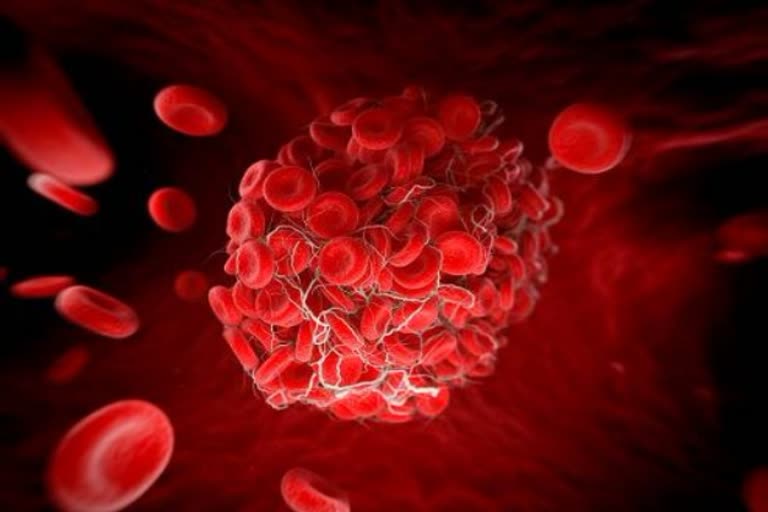पल्मोनरी थ्रोम्बो एम्बोलिज्म (PE) [Pulmonary Thromboembolism (PE) ] एक प्रकार की समस्या है. हालांकि, यह फेफड़ों की समस्या लगती है लेकिन यह पैरों की नसों में उत्पन्न होती है.
मानव शरीर में अशुद्ध रक्त नसों के माध्यम से दिल तक पहुंचता है और बाद में फेफड़ों तक पहुंच जाता है. इस तरह के रक्त ऑक्सीजन प्राप्त कर फिर हृदय में वापस जाता है और फिर शरीर के अन्य अंगों में पहुंचता है. यह लगातार होने वाली प्रक्रिया है.
लेकिन कुछ लोगों के लिए ये समस्या बन जाता है और उनके पैरों में खून के थक्के बन जाते हैं. इससे रक्त परिसंचरण धीमा होता है, जोकि शरीर को नुकसान पहुंचाता है और रक्त को गाढ़ा भी बनाता है.
इसमें अहम बात ये है कि जो लोग लगातार कई घंटों तक, बिना बैठते हैं उनमें इस समस्या का खतरा ज्यादा होता है. इससे फेफड़ों की कार्यक्षमता पर असर पड़ता है और सांस लेने में भी समस्या उत्पन्न होती है.
फेफड़े सिकुड़ने लगते हैं और व्यक्ति को सीने में दर्द की भी परेशानी हो सकती है. यदि रक्त के थक्कों का संदेह होता है, तो डी-डिमर (D-Dimer) नाम का एक टेस्ट कराया जाता है.
टेस्ट में यदि छोटे थक्के पाए जाते हैं तो फेफड़ों का एंजियोग्राम (Angiogram) किया जाता है. इसके बाद समस्या की पुष्टि होने पर हेपरिन (पोरसिन) [Heparin (Porcine)] नाम की दवा मरीज को दी जाती है.
ये भी पढ़ें : डेंगू नहीं है जानलेवा, सतर्क रहें और तत्परता से कराएं सही इलाज
इसके बाद खून के बने थक्के पिघलने लगते हैं. इसके अलावा हेपरिन (पोर्सिन) [Heparin (Porcine)] इंजेक्शन भी इन दिनों उपलब्ध हैं. इसके अलावा मरीज की हालत में सुधार होने पर हेपरिन (Heparin) की गोलियां दी जाती हैं.
वहीं यदि ये समस्या बढ़ जाए और सांस लेने में परेशानी हो तब एंजियोप्लास्टी (Angioplasty) करनी पड़ती है. इसमें मरीज की जांघ की मांसपेशियों के माध्यम से एक छोटी ट्यूब शरीर में डाली जाती है, जो खून के थक्कों तक पहुंचती है और फिर एंजाइम इंजेक्शन (Enzyme Injection) दिया जाता है. जिससे थक्के पिघलने लगते हैं.
इस बात का ख्याल उन लोगों को अधिक रखना चाहिए जो कार या विमान यात्रा करते हैं. उन्हें बीच-बीच में उठकर चहल-कदमी करते रहना चाहिए. इस समस्या से बचने के लिए नियमित व्यायाम भी करना चाहिए.
डॉ. आर विजय कुमार, सीनियर पल्मोनोलॉजिस्ट



